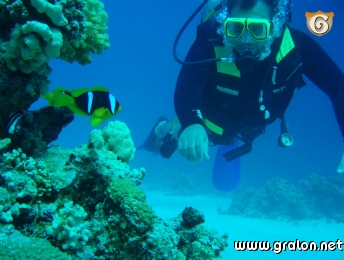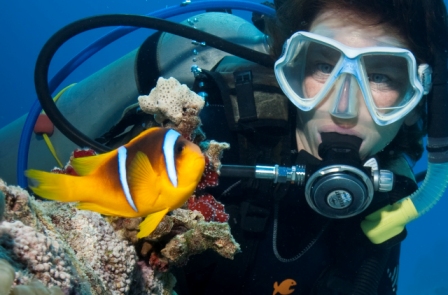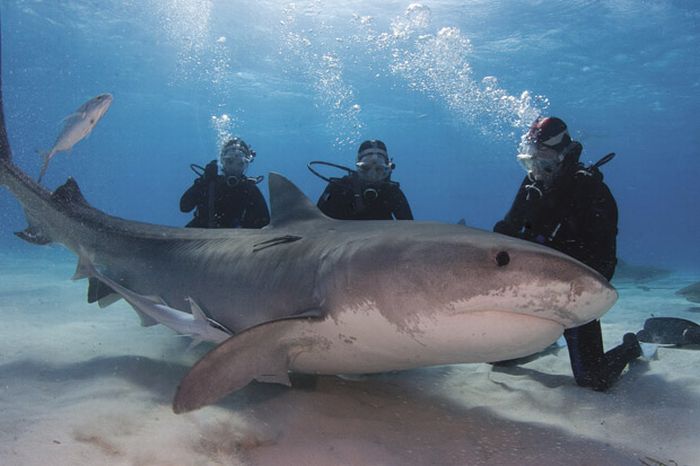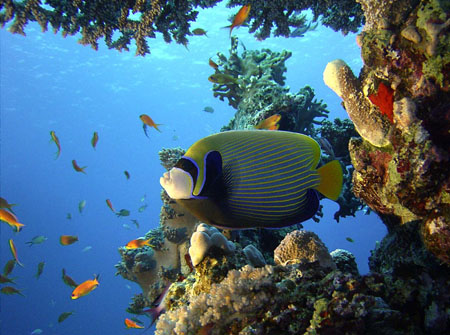|
|
| |
|
|
Diving
|
|
|
  
|
|
Diving in the
Red Sea can be
one of the most
inspirational experiences of
your life. The
Red Sea is a
spectacular ecosystem formed
millions of years ago.
The
Red Sea is open
to the
Indian Ocean
through the
Mandib
Strait and the Gulf of Aidan to the South. About 2250 km
(1398 mi) long and 355 km
(220.6 mi) wide at its
widest, and is the
northernmost tropical sea.
Being surrounded by
desert climate
makes the
Red Sea
warm and pretty salty, since
it receives minimal
waterfall each year, and
much evaporation occurs as a
result of the heat.
This also means that the
Red Sea
is relatively warm, with
average water temperatures
in February being 22°C
(72°F) and reaching 30°C
(86°F) in June – August.
|
|
The great conditions of the Red Sea also include good visibility, due to calm waters
and increased light penetration resulting from its close proximity to
the Equator. These factors make the Red Sea
great for both the growth of underwater wildlife, and also great for
diving to see this wildlife.
|
|
The water conditions of the Red Sea have helped to nourish more than 1200 species of
fish, of which about 10% are native only to the Red
Sea. These fish are supported by about 2000 km (1240
mi) of coral reefs along the coast, some as old as 5000 – 7000 years
old. Among these reefs can also be found dolphins, turtles, and
approximately 44 species of sharks. Though there are a few species
that are harmful to humans, most species are actually harmless.
|
|
Diving in the Red Sea also offers
something for everyone. Not only is there plenty of nature to
enjoy, but the further North you go, there are also many wrecks that are
quite beautiful and worth a visit. Since the Red Sea has had ships traveling through it as an important
trade route for centuries, some of these ships have gotten caught on
rocks and sunk, and some have even been sunk during
World Wars I & II. Needless to say, these
wreckage sites offer sine stunning views, having been
populated by some coral and fish in the years since their sinking.
|
|
While there are plenty of great dive sites worldwide, the Red Sea really
is amazing in that there is such a vast variety of marine life, and the
conditions are just right, so you’ll be able to experience a sea teeming
with unique life & sites, while also being able to visit some of the
most historically significant regions in the world. Dive by taking
a day boat or a live aboard. Either way, diving the Red Sea has never been easier or more worthwhile!
|
|
Marsa Alam
is a great diving destination. Marsa Alam enjoys pleasant water
temperatures year round, with winter temperatures being about 24°C
(75°F), and summer water temperatures around 30°C (86°F). Being
located further south, Marsa Alam enjoys less pollution and crowds,
making the water clearer, though in April and May visibility isn’t at
its best as a result of a seasonal boom in plankton. Overall,
Marsa Alam is so wildlife friendly with its warm waters, it’s common to
see bottlenose dolphins, spinner dolphins, sea turtles, sharks, and even
a dugong. Life is so peaceful here, and so are the waters, it
allows divers and snorkelers a great opportunity to experience the
colorful coral and some its friendly inhabitants.
Diving
Safari
is
the southern Red Sea’s most popular tourism & diving activities that
occur in Marsa Alam.
|
  |
|
|
|